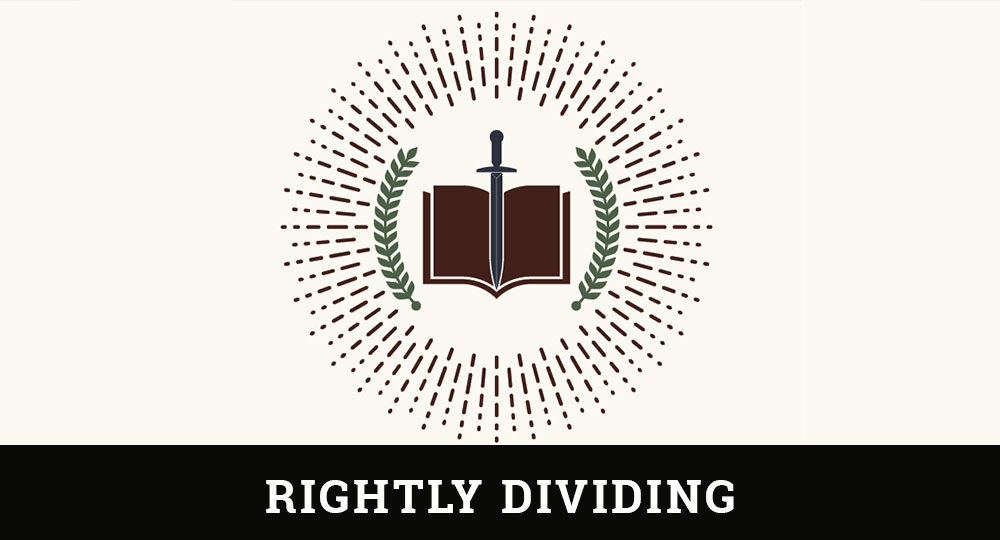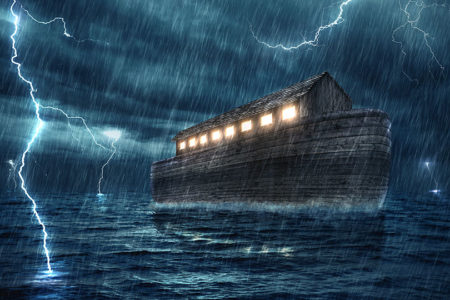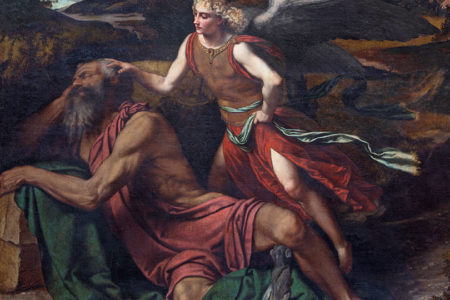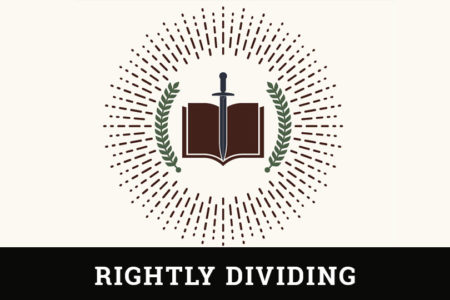The Revelation of Jesus Christ
Editor’s Note: This is the first in a series on the Book of the Revelation.
Futurists are inundating the country with articles, books and videos on what to expect by the year 2000 and beyond. This has rekindled an interest in the study of biblical prophecy. Many are turning to the Book of the Revelation, trying to grasp its message about the future—and rightfully so, for failure to understand this important book will leave people in total darkness concerning their personal destiny and that of their universe.
The Book of the Revelation has given great inspiration to many throughout the centuries. “In hours of darkness it has given courage to its readers, enabling them to endure persecution and death for the sake of Christ.’’1 However, others have viewed the book as a mystery. Its apocalyptic character, odd figures of speech, and unique symbolic language are seen as archaic literature. It is like an unsolvable puzzle whose meaning is unknowable or, at best, was forgotten centuries ago.
At first glance, the symbolism in Revelation seems rather confusing, a relic from a time of superstition and folklore. Such thinking should not be entertained by the reader of Revelation. Remember, most apocalyptic literature in the Bible has been revealed in dreams, visions, signs, and symbols (e.g., Daniel and Ezekiel). It should also be remembered that this is the method chosen by God to reveal His prophetic program to mankind.
For more than 1,900 years, Revelation has been a battleground for scholars who have differed on its interpretation. They have endeavored to fashion its strange pageant into a consistent and understandable eschatology.2 Throughout the centuries, scholars have taken at least four approaches to the interpretation of Revelation. They are commonly called the preterist, historical, idealist, and futurist views. The author of this series holds to the futurist view.
The Revelation
John presented the central theme of his writing in verse 1, “The Revelation of Jesus Christ.” Scholars have written extensively on whether John was referring to Christ as the provider or content of this book. The debate has centered on the Greek preposition of, which can be translated either from or about. Although the content of the book is about Christ (His person and program), emphasis is on Christ as the provider of this revelation. In other words, Christ received this revelation from “God [i.e., the Father] … to show unto his servants things which must shortly come to pass” (v. 1).
The “things which must shortly [speedily or quickly] come to pass” are the prophecies set forth in Revelation. This does not mean that the prophecies will be fulfilled immediately, for over 1,900 years have passed since the book was written. The idea of “must shortly come to pass” is that when the prophecies begin to be fulfilled, they will happen suddenly, in rapid succession, and without delay. Notice that they “must” or will, of necessity, come to pass at God’s appointed time.
Christ “sent and signified” this revelation “by his angel [messenger] unto his servant, John” (v. 1). The word signified (Gr., semeion) means to indicate or communicate by means of signs and symbolic language. Throughout Revelation angels play a major role as mediating messengers to reveal God’s Word to John by means of signs and symbolic language.
In verse 2 John affirmed that he was the writer of this book and “bore witness” (testimony) to three things. First, this was not his own word but the inspired “word of God.” Second, this revelation was “the testimony of Jesus Christ,” meaning a true witness that Christ Himself imparted to John. Third, throughout the book John indicated that he recorded “all things that he saw.”
The Recipients
John addressed his message “to the seven churches which are in Asia” (vv. 4, 11). They were local assemblies in the western section of the Roman province of Asia Minor (Turkey). Although only seven churches are mentioned, probably more existed in the area. Most likely they were established through Paul’s missionary outreach from Ephesus, the major city in Asia Minor. Why seven churches are mentioned is not revealed. Seven is a prominent number in Revelation, emblematic of completeness or perfection. Possibly these seven churches were representative of the various types of local assemblies in John’s day as well as throughout church history.
John addressed his readers with a traditional greeting of the day: “Grace be unto you, and peace” (v. 4). The greeting speaks of what Christians experience in salvation. God’s grace (unmerited favor) was manifested to believers through (Christ’s redeeming sacrifice; on the cross. Those who put their faith in Him experience the peace of, with, and from God.
It should be noted that this greeting came to John from the triune God: God the Father, “who is, and who was, and who is to come” (v. 4); God the Spirit, “the seven spirits who are before his throne” (v. 4) (some hold that this refers to ministering spirits before the throne of God, but the context seems to bear out that it speaks of the Holy Spirit); and God the Son, “And from Jesus Christ” (v. 5).
Apparently the Book of the Revelation was intended for public use in the church assembly rather than for private reading, as verse 3 indicates: “he that breadth, and they that hear.” Naturally, that should not keep individuals from reading and studying the book. In the first century, believers within the local church did not own personal copies of the Bible. Thus, the public reading of Scripture was crucial if they were to understand God’s Word.
Verse 3 promises a threefold blessing to all who embrace the Book of the Revelation: to the reader (“he that breadth”), the receivers (“they that hear the words of this prophecy”), and the responders (“and keep those things which are in it”). Six other blessings are mentioned in this book (Rev. 14:13; 16:15; 19:9; 20:6; 22:7; 22:14). The Book of the Revelation commences with a blessing (Rev. 1:3) and concludes with a blessing (Rev. 22:7). Contrary to popular thought in many circles, Revelation is not a closed book to be shunned, but an open book to be read and studied.
When John wrote “the time is at hand” (v. 3), he was not referring to clock time (Gr., chronos), but to a fixed season of time (Gr., karios). The beginning and duration of this fixed season is not stated, but the time is “at hand.” The phrase at hand does not mean that these prophesies will be fulfilled immediately. It means that their nearness should be kept in mind as if they are imminent. This fixed season is related to the time of Christ’s Second Coming. Although Christ instructed people not to set dates concerning His coming, He did warn them to be prepared (Mt. 24:36, 42, 44).
The Redeemer
John concluded his salutation with a greeting from Christ and a glorious portrait of His worth and work. First, in His person Christ is “the faithful witness” (v. 5). He faithfully witnessed to the people, the priesthood of Israel, and Pilate during His life and ministry. Second, in position He is “the first begotten of the dead” (v. 5). That is, He retains priority in position over all who are resurrected from the dead. He was the firstfruit of those resurrected from the dead (1 Cor. 15:20) and the first to receive a glorified body (Acts 26:23). Third, in power He is “the prince of the kings of the earth” (v. 5). Christ is the KING OF KINGS, AND LORD OF LORDS (Rev. 19:16) who is given the nations as His inheritance and will rule them with a rod of iron (Ps. 2:6–9).
Fourth, Christ’s provision to believers is threefold. The Lord’s care is seen through His love, as John stated, “Unto him that loveth us” (v. 5). In the Greek text, love is in the present tense, not the past tense as recorded in the King James Version. Christ has a continual, self-sacrificing, abiding love for those for whom He died. What a thought to contemplate! Next, He cleansed His own: “and washed [lit., loosed or freed] us from our sins in his own blood” (v. 5). True, Christ has cleansed believers through His shed blood, but He has also freed them. Christ paid the price with His own blood to buy mankind from their slavery of sin. He has once and for all set mankind free from the power and penalty of sin. Finally, Christ crowned the body of believers by making them “a kingdom of priests” (v. 6). Believers in the church make up a royal priesthood (1 Pet. 2:5, 9; Rev. 5:10) and will reign and rule with Christ during the Millennial Kingdom (Rev. 20:6). As individual priests, believers are to offer up spiritual sacrifices to God of their bodies, praise, and good works (Rom. 12:1; Heb. 13:15–16; 1 Pet. 2:5). Unable to hold in his gratitude, John broke out in praise: “to him be glory and dominion forever and ever. Amen(so be it)” (v. 6).
Fifth, John predicted Christ’s coming: “Behold, he cometh with clouds, and every eye shall see him, and they also who pierced him; and all kindreds of the earth shall wail because of him” (v. 7). The sign of Christ’s coming is that He is “coming in the clouds of heaven with power and great glory” (Mt. 24:30). This is not a reference to the Rapture of the church but to Christ’s Second Coming. No indication is found in Scripture that every eye will see Him at the Rapture, but all will see Him at the Second Coming. With the advancement of modem technology, all people alive on the earth will see Him come. Some might wonder how “they … who pierced him” will see Him because they have all died. Here, as in John 19:37 and Zechariah 12:10, the apostle is referring to all those who are against Christ and would call for His death, as did those of the first century, whether they be Jews or Gentiles. Jews called for Christ’s death (Mt. 27:22–25), but Gentiles crucified Him (Lk. 18:32–33). This makes all people responsible for Christ’s death (Acts 4:27).
At Christ’s Second Coming “all kindreds of the earth shall wail because of him” (v. 7). Israel will have the veil lifted from their eyes and will see that Jesus is their true Messiah. They will wail in repentance and grief over their sin. In contrast, wicked people the world over will wail and lament His coming because of the terror and judgment awaiting them from the Lord. Terror will fill the hearts of unsaved people, who will cry out for the mountains to fall on them in order to hide from Christ’s wrath (Rev. 6:16–17). John nevertheless gave affirmation and approval to the Lord’s coming: “Even so, Amen” (v. 7).
Sixth, the preeminent Christ spoke to John for the first time: “I am Alpha and Omega, the beginning and the ending, saith the Lord, who is, and who was, and who is to come, the Almighty” (v. 8). The Lord referred to Himself as the “I am” (v. 8), a term first used of God the Father (Ex. 3:14) to proclaim Him as the self-existent and sufficient sovereign of the universe. Jesus also used the words “I am” in seven self-descriptions recorded in John’s Gospel and ten times in Revelation. His omniscience is seen in the phrase “I am Alpha and Omega” (v. 8), the first and last letters of the Greek alphabet. He is the eternal “Word” (Jn. 1:1, 14) of God, and in Him “are hidden all the treasures of wisdom and knowledge” (Col. 2:3) of all things. His omnipresence is seen in the phrase “the beginning and the ending, saith the Lord, who is, and who was, and who is to come” (v. 8). He is the one who created, controls, and will consummate all things (Eph. 1:10; Col. 1:16–17).3 His omnipotence is seen in the words “the Almighty” (v. 8). Almighty is used nine times in Revelation to refer to God, who holds sway over all things as the supreme ruler of the universe.
The readers of Revelation have been greeted with a glorious salutation from their blessed Lord. Later John proclaimed that the testimony of Jesus is the spirit of prophecy” (Rev. 19:10). This means that the true purpose of prophecy is to provide testimony to the person and program of Jesus Christ. “Prophecy,” says C.C. Ryrie, “is designed to unfold the loveliness of Jesus.”4 Christ is the central character of this book all things commence and conclude in Him. He controls the conflicts and catastrophic judgments that fills the major portion of Revelation. He is the soon-coming King who will conquer His enemies and reclaim planet Earth. He is the one who will create a new cosmos in which will dwell the celestial city (New Jerusalem) to house only righteous citizens for eternity.
Futurists may inundate the country with articles, books, and videos on what to expect by the year 2000 and beyond. But only the Book of the Revelation, sent from the triune God, has stood the test of time as the true provider and predictor of what will happen on planet Earth.
- ENDNOTE
- Merrill C. Tenney, Interpreting Revelation (Grand Rapids, MI: Wm. B. Eerdmans Publishing Company, 1957), vii.
- Ibid.
- Lehman Strauss, The Book of the Revelation (Neptune, NJ: Loizeaux Brothers, 1964), 29.William MacDonald, Believer’s Bible Commentary, New Testament (Nashville, TN: Nelson, 1990), 1192.
For an explanation of the preterist, historical, idealist, and futurist views of the Book of the Revelation, write to THE FRIENDS OF ISRAEL GOSPEL MINISTRY, INC., P.O. BOX 908, BELLMAWR, NJ 08099, ATTENTION JOSEPHINE BAK.







